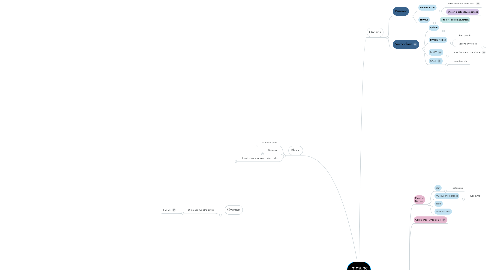
1. Overrun
1.1. stimulate hypothalamus
1.1.1. FEVER
2. Blood
2.1. 4 Blood types
2.1.1. A
2.1.1.1. AA/Ai
2.1.1.1.1. A Ag=self
2.1.1.1.2. B Ag=foreign
2.1.2. AB
2.1.2.1. co-dom alleles
2.1.2.1.1. universal recipients
2.1.2.1.2. B Ag=self
2.1.2.1.3. A Ag=self
2.1.2.2. Donor to
2.1.2.2.1. AB
2.1.3. B
2.1.3.1. BB/Bi
2.1.3.1.1. B Ag=self
2.1.3.1.2. A Ag=foreign
2.1.4. O
2.1.4.1. recessive
2.1.4.1.1. Receive from
2.1.4.1.2. B Ag=foreign
2.1.4.1.3. A Ag=foreign
2.1.4.2. universal donor
2.2. Rh factor
2.2.1. Rh+
2.2.1.1. D_ allele
2.2.1.1.1. more common
2.2.2. Rh-
2.2.2.1. no Rh factor
2.3. 3 major hematopoietic stem cells
2.3.1. Erythrocytes (RBC)
2.3.1.1. Rh factor Ag
2.3.1.2. ABO Ag
2.3.1.3. Hb
2.3.1.3.1. oxygen
2.3.2. Leukocytes (WBC)
2.3.2.1. granulocytes
2.3.2.1.1. Neutrophil
2.3.2.2. agranulocytes
2.3.2.2.1. lymphocytes
2.3.2.2.2. monocytes
2.3.3. Thrombocytes (Platelets)
2.3.3.1. important for clotting
3. Immunity
3.1. Active Immunity
3.1.1. Vaccination (artificially acquired)
3.1.2. Long term
3.1.2.1. Takes time to generate
3.1.2.1.1. Primary Response
3.1.2.1.2. Secondary Response
3.2. Passive Immunity
3.2.1. temporary
3.2.1.1. Rapid
3.2.1.1.1. Maternal antibody (IgG)
3.2.1.1.2. Anti-venom
3.2.1.1.3. immune donor gives Ab
4. Immunopathology
4.1. Autoimmunity
4.1.1. Loss of self tolerance
4.1.1.1. Type 1 Diabetes
4.1.1.2. Multiple sclerosis
4.2. Immunodeficiency
4.2.1. impairment of normal function
4.2.1.1. Inborn (primary immunodeficiency)
4.2.1.1.1. SCID
4.2.1.2. aquired (secondary immunodeficiency)
4.2.1.2.1. Aids by HIV
4.3. hypersensitivity reactions
4.3.1. Over reaction to allergen Ag
4.3.1.1. asthma
4.4. Blood transfusion & graft rejection
4.4.1. impact pt trx
4.4.2. isoimmunization
5. Major Histocompatibility Complex
5.1. binds Ag
5.1.1. displays Ag at surface
5.2. MHC I - HLA abc
5.2.1. endogenous
5.2.2. ALL nucleated cell (not rbc)
5.3. MHC II - HLA Dpqr
5.3.1. exogeneous
5.3.2. Professional APC
5.3.2.1. dendritic
5.3.2.2. macrophage
5.3.2.3. B-cell
6. the defense
6.1. Physical Barriers
6.1.1. skin
6.1.1.1. defensins
6.1.2. mucous membranes
6.1.2.1. lysozyme
6.1.3. tears
6.1.4. stomach acid
6.2. Commensal Organisms
6.3. Innate (natural) non-specific Immunity
6.3.1. Resident & Induced
6.3.1.1. Blood Cells
6.3.1.1.1. Neutrophils
6.3.1.1.2. Monocytes
6.3.1.1.3. NK Cells
6.3.1.1.4. Basophils
6.3.1.1.5. Eosinophils
6.3.1.2. Tissue Cells
6.3.1.2.1. Dendritic cells
6.3.1.2.2. Macrophages
6.3.1.2.3. Mast Cells
6.3.2. Complement System
6.3.3. Inflammation
6.4. Adaptive Acquired Specific Immunity
6.4.1. Colonal Selection
6.4.1.1. Clonal deletion
6.4.1.1.1. Expand cells specific for Ag
6.4.2. Responses
6.4.2.1. Humoral immunity
6.4.2.1.1. B-lymphocyte
6.4.2.2. Cell-mediated immunity
6.4.2.2.1. T-lymphocyte (CD3+)
7. Organs
7.1. Primary
7.1.1. Bone Marrow
7.1.1.1. hematopoietic stem cells
7.1.1.2. site of B-cells development
7.1.2. Thymus
7.1.2.1. site of T-cells maturation
7.2. Secondary
7.2.1. Spleen
7.2.1.1. wbc storage
7.2.1.2. recycle rbc
7.2.1.3. filter blood
7.2.1.4. No spleen = infection prone
7.2.2. Lymph Nodes
7.2.2.1. filter lymph
7.2.2.2. Secondary follicle
7.2.2.2.1. B-cell transform
7.2.3. MALT
7.2.3.1. monitors mucosal tissue
7.2.4. CALT
7.2.4.1. monitors skin
